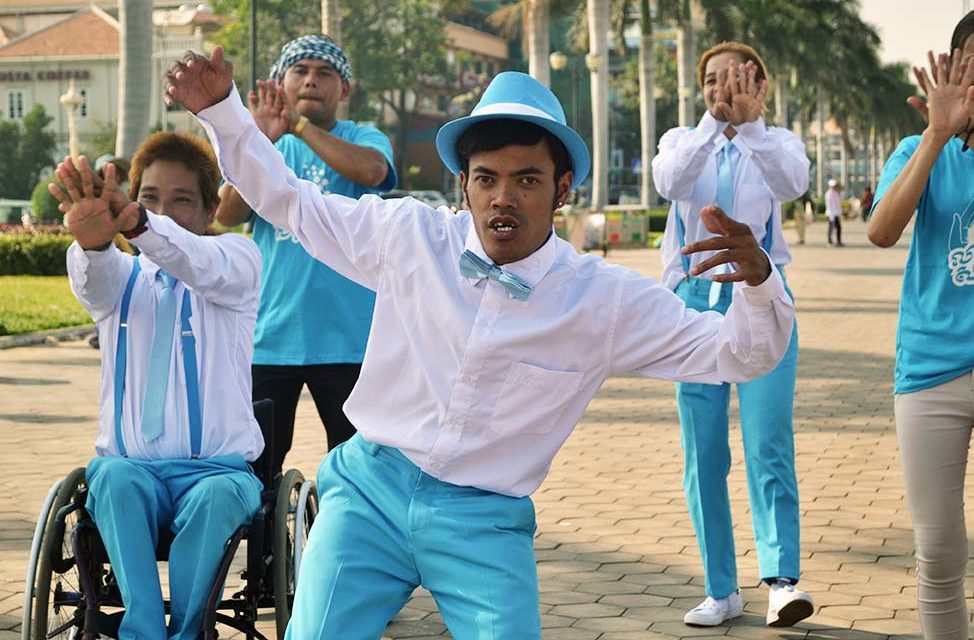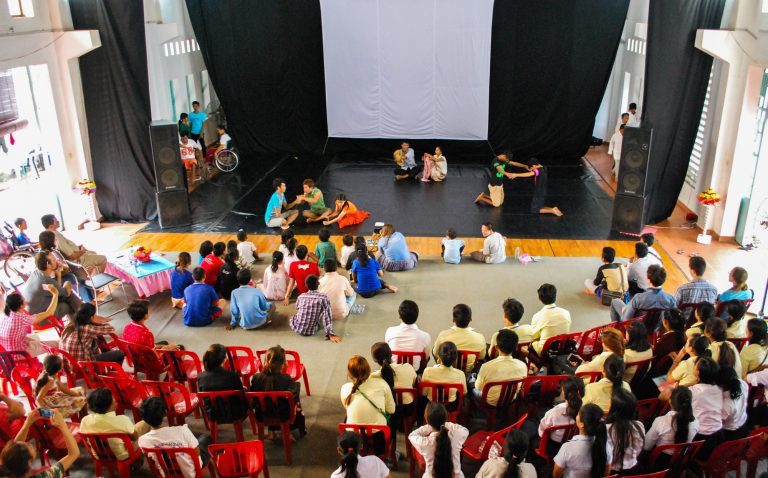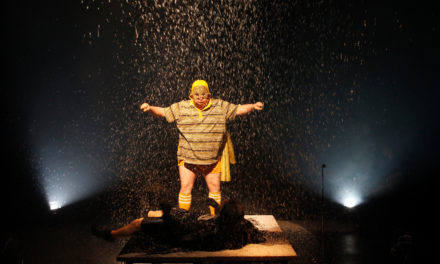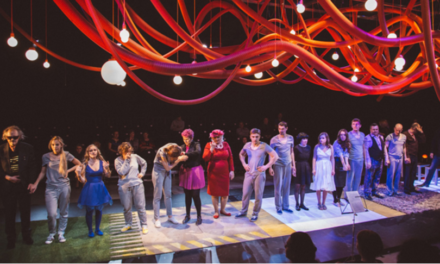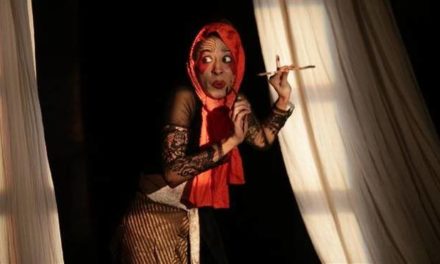Last year, I was introduced to a Youtube parody video of Taylor Swift’s Shake it Off by a few Facebook friends. Using the memetic power of the catchy pop tune, the video had flooded my dashboard. Mixing the music with break dancing, futuristic robotic dancing, the chapei dong veng, a traditional Cambodian two-stringed, long-necked guitar, and even the apsara, the video remix was distinctly Cambodian.
The apsara is perhaps Cambodia’s most prized cultural symbol. Depicted on sacred religious sites such as Angkor Wat, apsaras were created from the churning of the ocean of milk. They are heavenly deities embodying beauty and grace. Their dance form is considered by many as the highest art form in Cambodian culture.
But unlike many of the countless remixes, most of the performers have some physical or mental disabilities. The project is by Epic Arts, an inclusive arts organization based in Kampot, Cambodia, and registered as an NGO in the UK. The main star, and apsara, is played by Onn Sokny, one of two Co-Directors of Epic Arts.
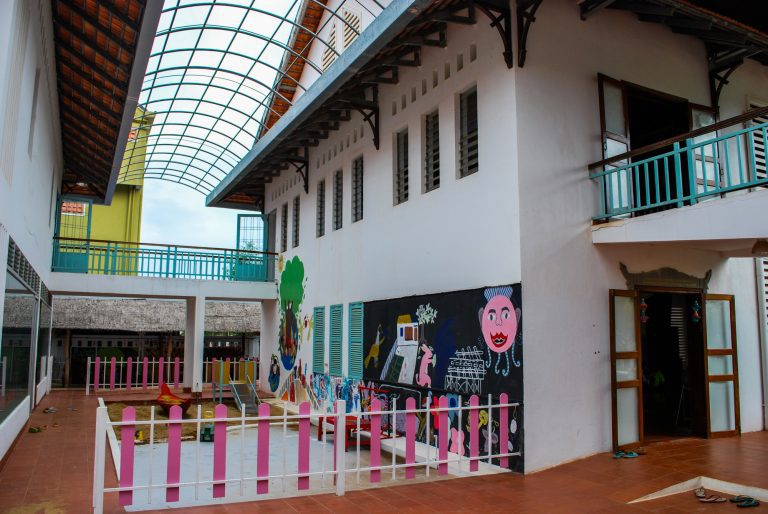
Epic Arts grounds |Photo Credits Epic Arts
When seeking assistance for shooting the video, some organizations did not want to be involved with the video, fearing repercussions from the government for somehow “tainting” their nation’s inviolable symbol. Ultimately, the arts organization, Cambodian Living Arts (CLA), bravely stepped up, and we see some of their dancers and costumes featured.
The video was a success; comments were largely positive and they attracted a quarter of a million views in the first week, many coming from within Cambodia. Onn told me in her office that, “we wanted to be respectful of Cambodian culture, but we will not hide our own creativity and expression.” She insists that physically handicapped Cambodians have a place in every facet of Cambodian life, especially the arts. Accordingly, the video, and others like them, are just one tactic in Epic Art’s toolbox for engendering positive visibility for all Cambodians.
Like so many countries, Cambodia’s treatment of those with mental disabilities can be appalling. There is a toxic mixture of mental disorders lingering in the older generation that survived the Khmer Rouge, a virtually non-existent health care system for mental disorders, especially in rural areas, all coupled with abject poverty. Birth defects are considered punishments for bad karma from previous lives.
Here, it is not uncommon for people with more aggressive mental disorders to be left chained up at home, to protect themselves and to protect the family and neighbors in the absence of more humane treatment options and understanding. The practice is so common that in 2015 the Transcultural Pyschosocial Organisation started “Operation Unchain,” to treat patients in the provinces, unable to come to the few hospitals in the cities. Funds , however, are quickly running out.
This is the kind of inhuman treatment that Epic Arts strives to fight. Epic Arts was first founded in 2001 with a project of creating dances with children in Nanning, China. Seeing the need, they decided to focus on Cambodia, first opening Epic Arts Cafe in Kampot in 2006, and then building a fully accessible arts center in 2009. The center is the first of its kind in Southeast Asia, and offers inclusive visual and performing arts classes and education. While Epic Arts focuses on people with physical or mental disabilities, it is open to all.
One of Epic Arts most active external-facing programs are their performances around the country. Here, young Cambodians can see and, most importantly, find joy through performers who would usually be ostracized for their differences. While their Youtube videos are great for their more viral outreach, on the ground performances that engender dialogues between the performers and everyday Cambodians are ultimately more positive.
This ethos moves into every aspect of Epic Arts’ work. At Epic Arts Cafe, now my favorite in Kampot, the food is delicious, the place is well run, and the coffee is strong; the fact that it’s run almost entirely by people with various disabilities is an aside. Although it remains an incredible challenge to make a living wage in Cambodia, Epic Arts wants more than just survival for their members. Their videos, the performances around the country, and their café are all quietly putting handicapped people in valued positions; positions where they are in contact with the public, and are appreciated.
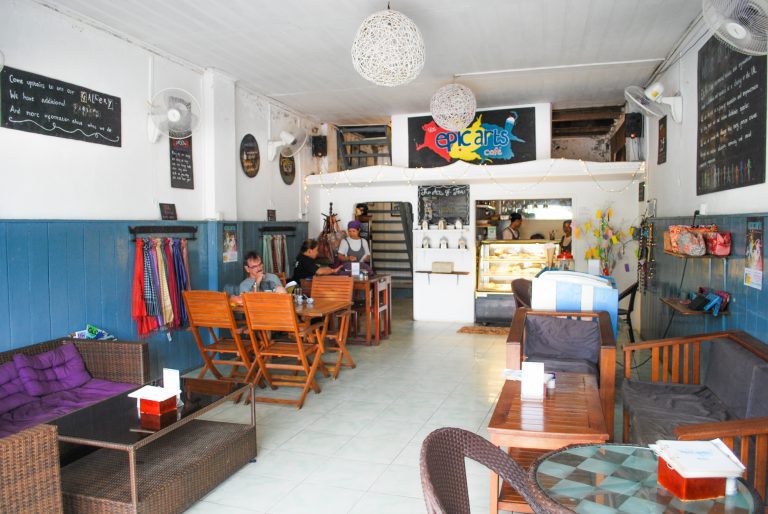
Epic Arts Cafe |Photo Credits Epic Arts
While the work for positive visibility is invaluable, the real work comes within. Fighting stigma, fighting mental and physical boundaries requires hard work and support. Po Sakun is a great example and value of this underserved population. Growing up in a wheelchair in Kampot, Po’s neighbors told his mother not to waste money and time sending him to school; few job options would be available to him. Po learned about Epic Arts through their community outreach program and started studying sign language. In 2011, passionate about their mission, he began as a volunteer receptionist before becoming a full-time administrator.
Before coming to Epic Arts, Po was fixing electronics in Phnom Penh, a fine job for many Cambodians, but Po is obviously brilliant, not to mention creatively oriented. Po is well versed in three languages, and now is one of Epic Art’s star dancers, working as their Workshop Coordinator. Before, people looked down at Po, but not on stage. Po’s passion are the performance tours around the country, where he and his fellow performers show those very people all that they can do.
“The more we go out, the more we will change their thinking,” he told me on Epic Arts’ lush grounds. “Epic Arts has the same goal that is in my heart. I want to change people’s perspectives about us.”
My last day at Epic Arts I watched their quarterly Epic Arts Showcase, a series of public performances, open to anyone, especially in Kampot. School groups and expats alike came to enjoy their latest performances, from short plays by the youngest children, to the older, more experienced performance troupe. One scene of the last performance struck me. A young man who had possessed such an exuberant stage presence throughout the day, suddenly transformed into a dejected beggar. He crawled on the floor, arms and desperate eyes reaching out to the audience for assistance, anything. Watching, we remember how close many of these performers and students may be to such a fate, not to mention to being left chained up at home. The performance is a metaphor for all that Epic Arts hopes to be. Bravely overcoming all the economic and social obstacles in their way, publically, loudly, creatively.
This article was originally published on culture360.asef.org. Reposted with permission. Read the original article.
This post was written by the author in their personal capacity.The opinions expressed in this article are the author’s own and do not reflect the view of The Theatre Times, their staff or collaborators.
This post was written by Ben Valentine.
The views expressed here belong to the author and do not necessarily reflect our views and opinions.

